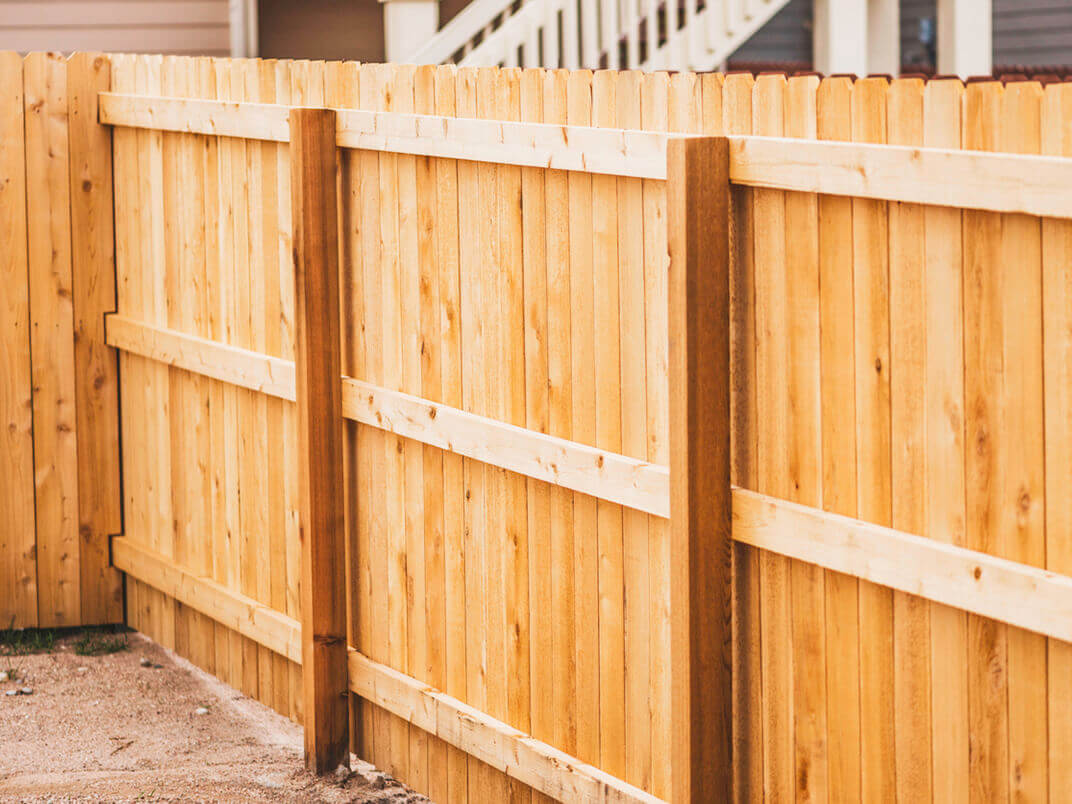All Categories
Featured

Fencings are an essential part of your property, offering privacy, security, and visual value. Nonetheless, they are frequently revealed to the aspects and can deal with weather-related damage gradually. Whether it's solid winds, rain, snow, or intense warm, climate condition can slowly damage your fencing, bring about pricey repairs or substitute. There are numerous actions you can take to protect your fencing from weather-related damage and extend its life-span. Here's exactly how you can guard your fence versus the components.
- Choose the Right Material. The sort of material your fence is made from plays a substantial role in exactly how well it will stand up to weather. Some materials are normally much more resistant to damages than others. :
Wooden Fences: While beautiful and classic, timber can be at risk to wetness, rot, and bugs. Pressure-treated wood or cedar can supply much better resistance to these concerns. Vinyl Fences: Vinyl is very resistant to wetness, rot, and parasites. It additionally stands well to extreme sunlight and heavy rainfall. Steel Fencings: Wrought iron or aluminum fences are durable and can endure a selection of climate conditions. They can, nevertheless, experience corrosion in time, especially if not correctly coated. Compound Fences: Made from a mix of wood fibers and plastic, composite fencings are a lot more resistant to weather-related damages compared to conventional wood fencings. Choosing the appropriate material for your region's climate is the first step in safeguarding your fence from weather condition damages.
- Seal or Discoloration Wooden Fences. Wood fencings are especially prone to damage from dampness, UV rays, and temperature variations. Among one of the most efficient means to safeguard your timber fencing is by applying a protective sealant or tarnish. These products assist:
Protect Against Water Damages: Sealants develop a waterproof barrier, preventing wetness from permeating right into the wood and triggering mold, mold and mildew, or rot. Secure Against UV Damage: A good discolor or sealer will certainly likewise block damaging UV rays from the sunlight, which can create wood to dry, fracture, and tarnish over time. Protect the Fencing's Look: Routine discoloration assists maintain the all-natural beauty of the wood and extends its life-span. It's recommended to reapply the discolor or sealant every 1-- 2 years to keep your surround excellent condition.
- Set up a Barrier for Wind Security. Solid winds can trigger considerable damage to your fence, particularly if it is weak or tall. Wind can flex or damage wood panels, loosen fencing messages, or perhaps create the entire fence to collapse. Installing a windbreak-- such as planting shrubs, hedges, or installing a mesh barrier-- can assist secure your fencing from high winds.
Furthermore, you can reinforce the posts with concrete or steel braces to supply extra stability and stop leaning or shifting.
- Trim Overhanging Branches. Looming tree branches can posture a major risk to your fencing throughout tornados or high winds. Dropping branches can break panels or damage the fencing articles, resulting in costly repairs. Routinely trim any type of branches that hang over your fence, particularly if they remain in close distance to it. Maintaining the branches cut down lowers the danger of branches damaging off and triggering damage to the fence.
- Regular Evaluations and Upkeep. Doing normal maintenance and examinations is vital to catching possible problems prior to they rise. After a heavy tornado, check your fence for any kind of signs of damage, such as loosened panels, leaning blog posts, or damaged areas. Taking treatment of little problems before they become larger ones can help expand the life of your fencing.
In addition, cleansing your fencing periodically to get rid of debris, mold, or dirt can aid preserve its look and stability. For wood fencings, gently stress wash the surface to eliminate built-up grime, and for plastic fencings, use a moderate detergent to clean any type of discolorations.

- Guarantee Appropriate Drain. Water damage is one of the most usual weather-related concerns that impact fencings. Poor drainage can lead to standing water around your fence blog posts, which can cause the posts to rot or deteriorate over time.
- Use a Safety Covering to Metal Fencings. Metal fences, such as those made from iron or steel, are highly durable yet can be prone to corrosion if not effectively kept. Using a safety covering or paint that is especially created for steel can assist avoid corrosion and corrosion. Make sure to examine the fence occasionally for any type of indications of corrosion, and address it promptly by fining sand and painting the affected locations.

Final thought. Your fence is an important investment, and protecting it from weather-related damages will help guarantee that it remains to offer its function for many years to find. By picking the appropriate materials, consistently keeping your fence, and taking steps to shield it from the components, you can lessen weather-related damage and expand its life-span. Whether you're taking care of strong winds, heavy rain, or the severe sun, these straightforward steps can go a lengthy way in protecting the problem and look of your fence, conserving you money and time in the long run.
Latest Posts
Change Your Home with Sturdy Hardwood Floor Covering from Carpet Interiors Floor & Home
Published Apr 19, 25
1 min read
Trade-In Value with Ron Marhofer Hyundai of Cuyahoga Falls
Published Apr 19, 25
1 min read
Streamline Your Car Financing Trip with Hyundai of Akron
Published Apr 19, 25
1 min read
More
Latest Posts
Change Your Home with Sturdy Hardwood Floor Covering from Carpet Interiors Floor & Home
Published Apr 19, 25
1 min read
Trade-In Value with Ron Marhofer Hyundai of Cuyahoga Falls
Published Apr 19, 25
1 min read
Streamline Your Car Financing Trip with Hyundai of Akron
Published Apr 19, 25
1 min read